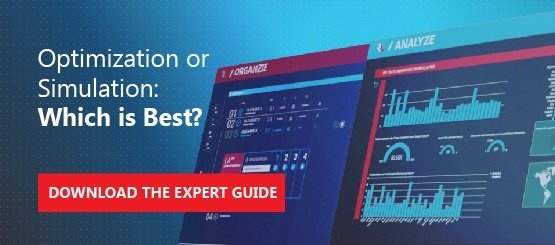- Innovation: A period of growing interest and excitement at what the technology can do.
- Peak of inflated expectations: The technology is viewed as having unlimited potential.
- A disillusionment trough: A realization that the technology is not yet there and loss of immediate interest.
- Enlightenment: Practical applications are developed.
- Productivity plateau: The technology achieves mainstream acceptance.
Two technologies that offer the potential to be game changers are prescriptive analytics and machine learning. According to Gartner, these are currently at the peak of inflated expectations and 5 to 10 years from mainstream acceptance. However, those who have invested in these technologies are already reaping significant benefits.
Prescriptive Analytics
Prescriptive analytics represent the highest form of business analytics. At the bottom rung, descriptive and diagnostic analytics tools are used to ascertain what happened in the past. Predictive analytics takes a step further and analyzes reasons for what happened and what may happen next.
Prescriptive analytics take the logical step of switching from reactive analysis to proactive action. Prescriptive analytics tools help business leaders determine the best course of action to achieve specific business objectives. Prescriptive analytics provide business leaders with specific recommended actions, whereas other forms of analytics provide information.
A key factor behind the ability of prescriptive analytics is the development of better algorithms to accurately model how organizations actually function. With these models in place, it’s possible to realistically predict outcomes and take concrete steps to optimize the business. Linked to this is the need to collate organizational data that reveals how organizations function and harness computing power to make this possible.
Critical elements of a successful prescriptive analytics strategy include:
- Business modeling: To transparently model the business, without resorting to writing hard code, but by an intuitive process of developing mathematical relationships and constraints.
- Flexibility: The ability to readily change, adapt and optimize the model.
- Validation: To validate and correlate model’s outputs to known business performance.
- Real time: Solutions should be developed quickly.
Machine Learning
Gartner regards machine learning as algorithms that can learn without being explicit human programming. Examples of machine learning include voice recognition, virus protection and spam identification.
Interest in machine learning is increasing because of the availability of complex data streams that can be analyzed to reveal behavioral changes. For example, supply chain organizations, such as Amazon, already use machine learning to better understand the market place.
Gartner feels that supply chains can particularly benefit from machine learning. Using the ability to analyze and learn from data, Gartner sees supply decisions being directed through a better understanding of the large amounts of data available to organizations. Examples include forecasting customer demand and identifying changing market dynamics.
Where These Technologies Stand
Gartner places both technologies at the peak of innovation. Expectations are higher than current reality. There will be a period of disillusionment as users grapple with immature technologies that aren’t ready for mass deployment. Thereafter Gartner sees increasing acceptance as vendors develop workable solutions and businesses learn to use the technologies.
Gartner regards both as being 5 to 10 years from maturity. This is not to say that opportunities don’t exist today. Those that capitalize on these technologies now and learn to use them have a 5-year lead. Examples of businesses using prescriptive analytics and machine learning show that, for some, the technology is already mature. According to Gartner, between 5 and 20 percent of the companies that can benefit from these technologies are already doing so.







